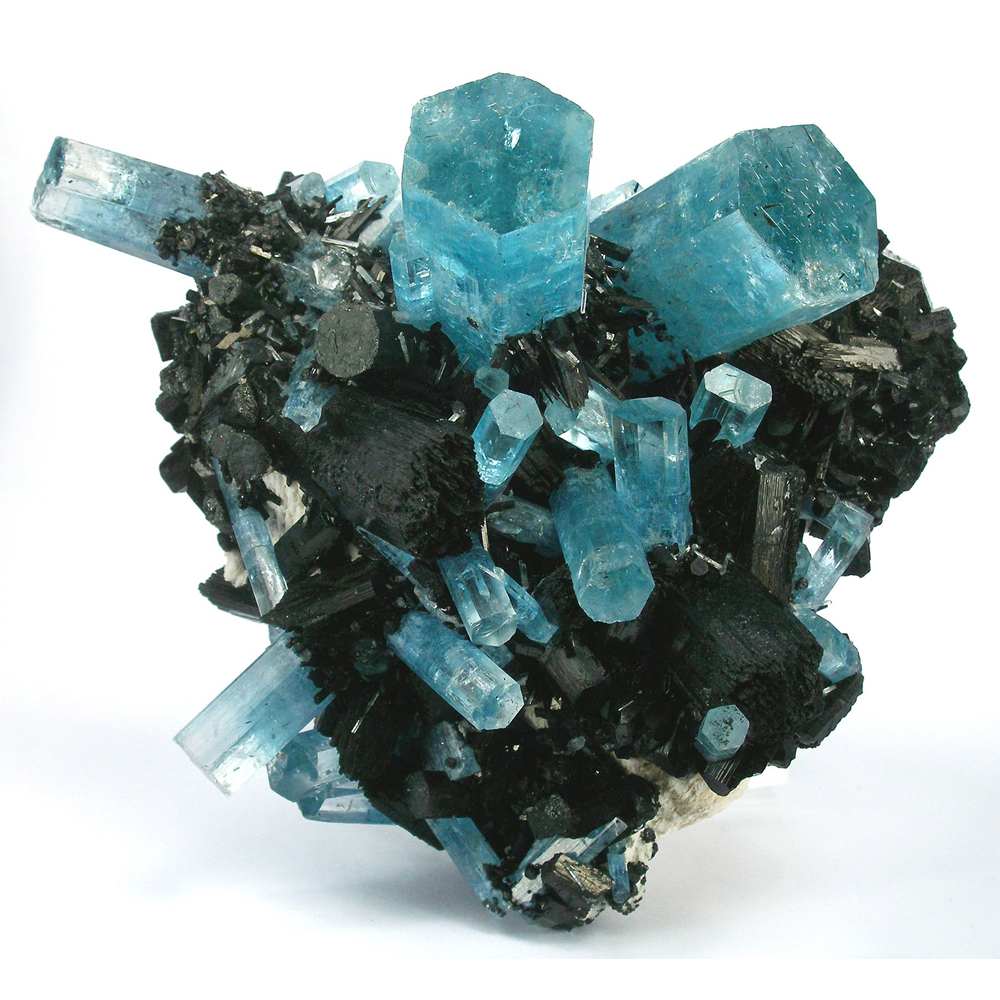Where in the world do aquamarines come from? Aquamarine deposits can be found in a variety of different places. One of the world’s major producers of aquamarine is Brazil. Other notable locations include Nigeria, Zambia, Mozambique, Madagascar, Pakistan, and Vietnam. Aquamarine can also be found in Colorado, where it’s actually the state’s official gemstone.
How are aquamarines formed? Like emeralds, aquamarines are a variety of the mineral beryl. When magma is brought to the earth’s surface by volcanic eruption, an igneous rock called pegmatite is sometimes formed. As the magma solidifies, water occasionally gets trapped within the cavities and overtime, these cavities crystallize and eventually become pegmatite. When the mineral beryl occurs in these rocks, aquamarine can form.
Where does an aquamarine’s color come from? The light blue color found in aquamarine gemstones is caused by trace amounts of iron.
What determines the value of an aquamarine? Like other gemstones, an aquamarine’s value depends on its color, cut, clarity, and carat weight. Aquamarines that feature a dark blue to slightly greenish blue color with moderately strong intensity are the most valuable. These gems will have a pure, intense blue color. Typically, most aquamarine gemstones are eye-clean, so clarity is rarely a problem. The most common aquamarine shapes are emerald, round, and oval and most gemstones are cut very well since their roughs allow for it. In regards to carat weight, obviously the larger the gemstone, the more valuable it will be. However, aquamarines weighing over 25 carats tend to decrease in price per carat since not too many people want aquamarines that are too large for their jewelry.
How do aquamarines compare to other light blue gemstones, like blue topaz? Typically, you’ll notice a paler blue color in aquamarines compared to other, more vivid light blue gemstones but sometimes the difference can be quite challenging to see. Jewelers can usually tell the difference by looking at the gems under a microscope or jewelers loupe. When looking at aquamarine versus blue topaz jewelry, you’ll most likely notice that aquamarines are much more expensive. Compared to aquamarine, blue topaz is much more readily available and because of this, it’s less valuable.
Do aquamarines symbolize anything? Aquamarine is the official birthstone for the month of March. It’s also the designated gemstone for the 19th anniversary. The gemstone is believed to bring hope, health, harmony, and happiness to its wearer. Due to its color, aquamarine is also known as the gem of the sea and was once believed to keep sailors safe.
Can aquamarine jewelry be worn every day? On the Mohs scale of mineral hardness, aquamarine falls between 7.5 and 8, which means it’s a durable gemstone for jewelry as long as it’s treated with care.
How should I care for my aquamarine jewelry? Make sure to avoid wearing your aquamarine jewelry near anything that might potentially scratch it. Similarly, try to avoid accidentally bumping your aquamarine jewelry against any hard surfaces. To clean your aquamarine jewelry, use warm soapy water and a soft brush. Also make sure to avoid any contact with harsh chemicals.
View Kloiber Jewelers’ aquamarine jewelry collection here.


